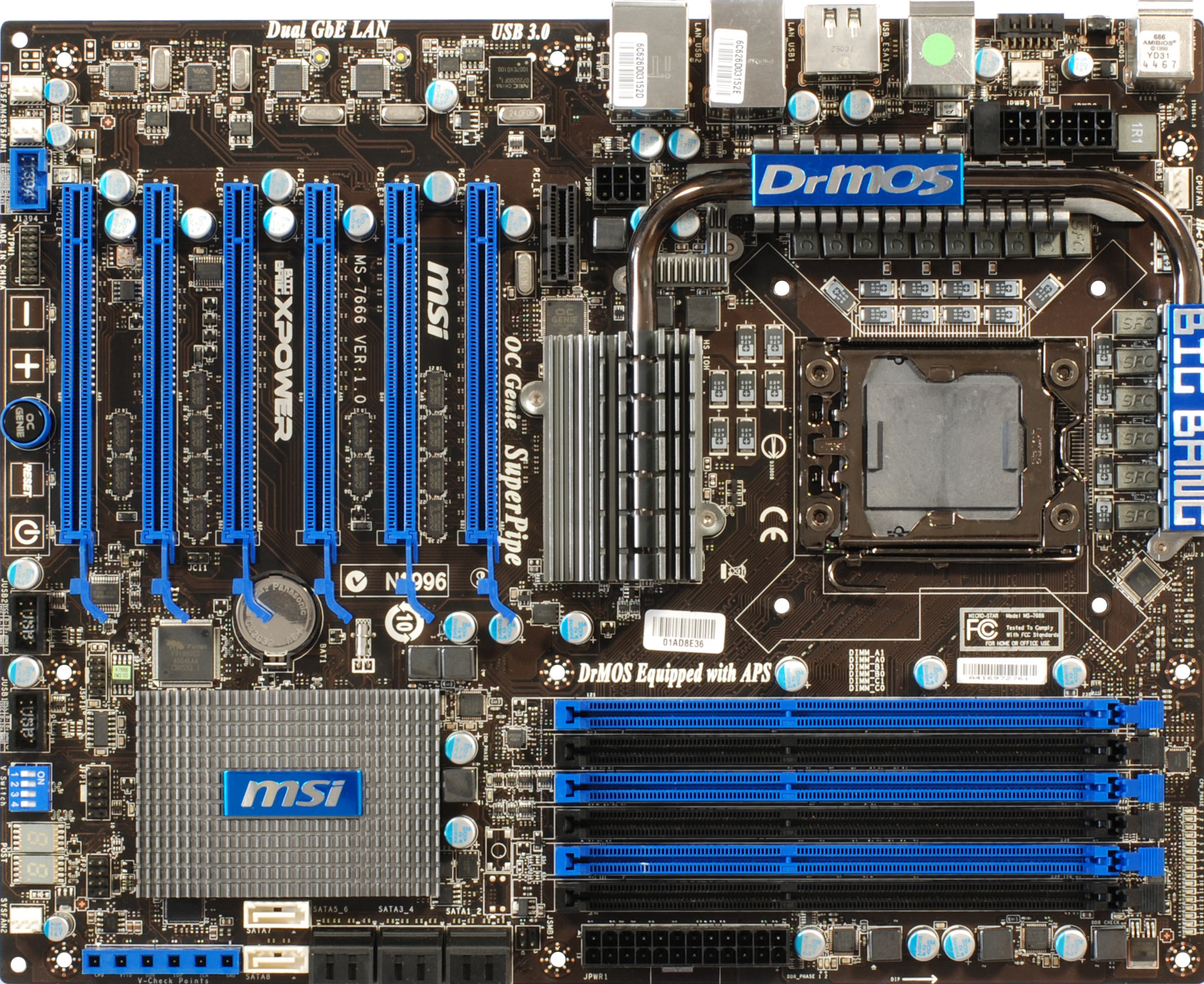Mainstream Or Hardcore? Two X58 Motherboards Compared
You need Intel’s LGA 1366 interface and an X58-based platform in order to run the latest six-core processors, but which board should you pick? We're comparing a mainstream and flagship platform from the same company to explore the worth of high-end X58.
Hardcore Enthusiast: MSI BigBang Xpower
MSI states that the BigBang Xpower focuses on four key areas: gaming visuals, audio, component quality, and performance. While we found that many of these claims are true, there are very few benefits to be seen in direct performance comparisons. Value is mainly found in the extensive feature set.
The basic feature set isn’t too different from the X58 Pro-E: six SATA 3Gb/s ports with RAID 0, 1, 5, and 10 support, triple-channel DDR3 memory support up to 24 GB, and six plus six USB 2.0 ports.
Everything else, though, is implemented differently. The PCI Express connectivity is distributed over a total of six physical x16 PCI Express slots and one x1 slot. The first two x16 slots support PCIe 2.0 x16, the next two can run at up to a x8 link speed (for quad graphics setups), and the last two are each limited to x4 links. The board supports both ATI CrossFire and Nvidia’s SLI.
A note about the memory slots: MSI uses EZ DIMM sockets, which work with a single lock on one side of the memory socket to avoid mechanical interference with graphics cards. We had to smile about this, as MSI has complained about a competitor that uses the same EZ DIMMs on its P55 motherboards. A German MSI PowerPoint sales presentation states that the modules can fall out, making Q-DIMMs an inferior choice. We’ve found that the simpler sockets work quite well on at many boards, regardless of vendor.
Voltage Regulators: 16 Phases
MSI employs a total of 16 phases using so-called “military-class” components (according to the MIL-PRF-39003L specification) that consist of highly conductive capacitors with tantalum cores. These are said to be more thermally and mechanically robust. Super ferrite chokes ensure cooler operation and provide increased current capacity. Solid capacitors are mandatory for such a premium product anyway. MSI talks about having 96% power efficiency of its voltage regulator array, and the design is purportedly capable of supporting up to 640A peak current and 480W.
Five fan headers are available to ensure sufficient cooling. The multi-phase design is certainly the right path for extreme overclocking, and we found that the active power switching (APS) implementation actually helps to keep idle power low. In fact, draw is lower than on the X58 Pro, which we wouldn’t have expected from a premium motherboard.
Get Tom's Hardware's best news and in-depth reviews, straight to your inbox.
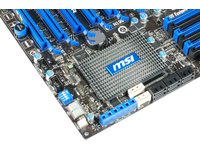
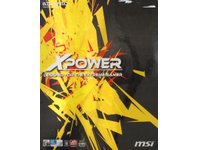
High-End Audio Included
Rather than rely on a simple HD Audio solution tied to the chipset audio controller, MSI here bundles a x1 PCI Express card called the Quantum Wave. The card is based on an EAX 5.0-capable audio controller and supports both THX and 24-bit/192 kHz streams. The add-on card sports gold-plated 3.5 mm jacks and a Realtek ALC889 audio chip, the same as on the X58 Pro-E. These are back-lit using the appropriate ATX colors that you are familiar with from the ATX connector panel.
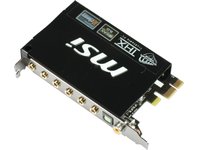
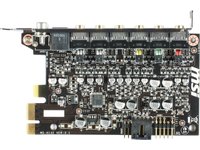
Current page: Hardcore Enthusiast: MSI BigBang Xpower
Prev Page Mainstream: MSI X58 Pro-E Next Page BigBang Xpower Features